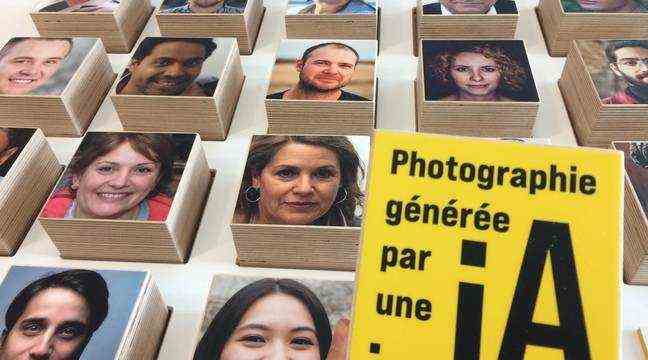It’s like a dark force surrounding us. Artificial intelligence controls our IT uses, our daily lives. Soon our thoughts? Object of fantasies, between science fiction and high hopes, “AI”, for those close to it, often arouses mistrust through ignorance. It is to remedy this that the
House of Mathematics and Computer Science (MMI), which aims to make these disciplines accessible to all, has designed a didactic exhibition to better understand it, free and limited to Saturdays from 2:30 p.m. (reservation recommended).
Multidisciplinary approaches
“We want to explain how AI works, in a fairly simple way, by playing and with the support of a mediator,” explains the director of the MMI, Olivier Druet, himself a teacher-researcher in mathematics. “Everyone talks about AI in two ways: on the one hand, it’s great, it’s going to revolutionize the world. On the other hand, it’s a super intelligence that makes us slaves. We are a thousand miles away! »Different poles tackle more tangible facets: the history of AI, its applications, its evolution, its professions …
But first, how do you define AI? “The curators of the exhibition, teachers at ENS Lyon, were never able to agree on what AI was”, laughs Olivier Druet, presenting a video center where specialists from different circles give their vision, “so that visitors come out with their own definition of AI”. A historical frieze shows the various origins of AI, to show its multidisciplinary character. “AI was born in the 1950s, or even in the 1930s, when we began to ask theoretical questions in neuroscience. AI really started in 1956 with people who decided, one summer, that they were going to make a machine do smart things. “
Not so smart, after all
Games make it possible to understand facial recognition, among other things, and to see that AI does not have an infused science. Like us, she has to learn first before she knows, and unlike us, she’s not good at nuances. Complex tasks are easier for him than basic tasks. Which often comes down to wondering what intelligence is. “Beating a world champion in chess is raw programming. Rather, AI is the ability to recognize a red light in an image. “That’s the whole paradox:” We know more easily how to program a machine that wins at failures than a machine that does the dishes. “
The exhibition also discusses the algorithms that seem to use our data. “In the 2000s, at the start of social media, the first thing people did was post a picture of their cat. They wrote ‘cat’ next to it, and we ended up with databases of cats on which we were able to train the algorithms. “Today, we are in a golden age of AI,” linked to the explosion of available data, concludes Olivier Druet. “But nothing says that the projects we are forming today will not collapse in 5 years. This story is not linear, it goes from failure to success to failure… ”The important thing is to know what is expected of AI, and what we do not want it to replace. Either way, we stay in control. Our brains can sleep easy.

